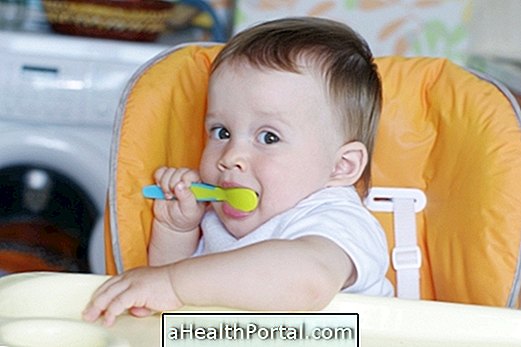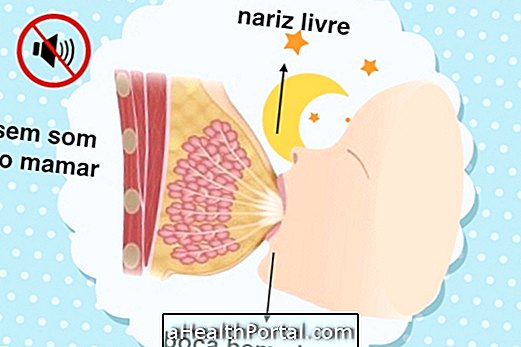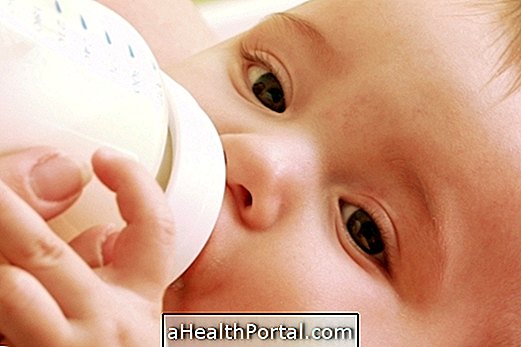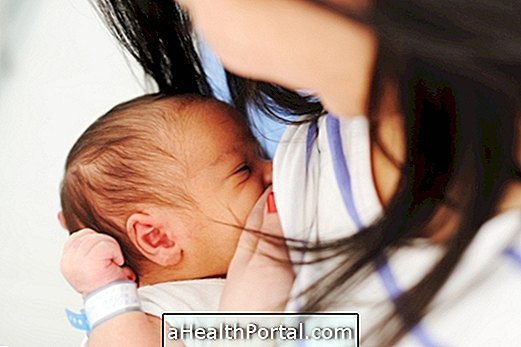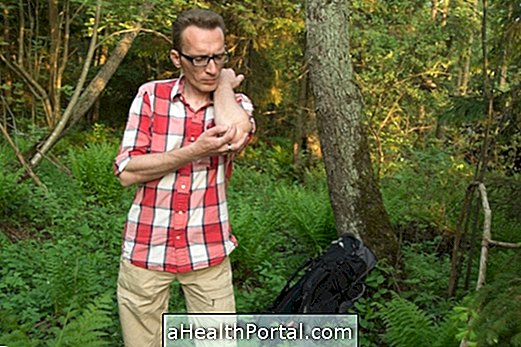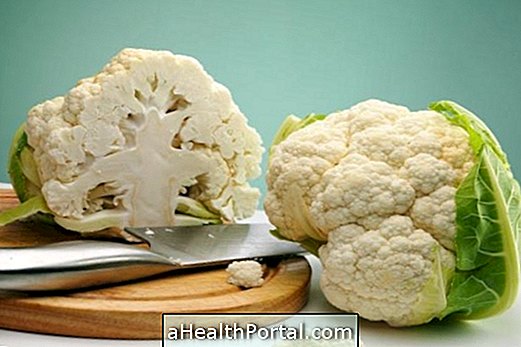The mother should only stop breastfeeding from the 2 years of age of the baby and to do so should decrease the feedings and their duration, for example.
However, the baby should breastfeed exclusively in the breast up to 6 months, not receiving any other food until this stage, but the mother should continue breastfeeding until the child completes at least 2 years of age, since the breast milk is ideal for a good growth and development of the baby. Read more about: Breast Milk Composition.
When is the best time to stop breast-feeding?
The mother can choose when to stop breastfeeding, but it is best for the child to be breastfed at least until the age of 2 years, and you should stop breastfeeding only after that age.
However, the amount of breastfeeding during the day should gradually decrease from the baby's 7 months to facilitate weaning and the complications that can occur, such as milk cobblestone and mastitis, and the feeling of abandonment that can occur in the baby.
In some cases the woman may have to stop breastfeeding so as not to harm the baby's health as in the case of having chickenpox, herpes with breast lesions or tuberculosis. Read more in: When not breastfeeding.
4 Tips to stop breastfeeding without trauma
Although it is not always easy to stop breastfeeding for the mother or the baby, there are some techniques that facilitate weaning, such as:
1. Decrease feeding and play with baby

For this to be done without harming the mother and the baby, it is possible from the baby's 7 months to replace a feeding time for a meal.
For example: If the baby eats salty potatoes at lunch, he should not nurse at this time, not an hour before, not an hour later. At 8 months, you should replace the snack, for example, and so on. Usually from 1 year of age the child can start to eat the same meal as the parents, and during this time the mother can only breastfeed when the baby wakes up, before the baby's breakfast, and when the baby baby to sleep in the afternoon and at night. This care is important because, by decreasing the number of times the baby suckles, the production of breast milk also decreases at the same rate and so the mother does not have heavy breasts full of milk.
2. Decrease breastfeeding duration

Another good technique to end the period of breastfeeding without trauma is to decrease the time the baby breastfeeds.
For example: If the baby gets about 20 minutes in each breast, what you can do is let him suck only 15 minutes in each breast and, each week, decrease a little bit more. However, it should not be forced to leave the breast, this moment is important that the mother has the time and willingness to give all the attention the baby needs, playing with it, because so the baby associates that the mother is not alone to suckle, but that she can play as well as Dad.
3. Do not breastfeed after eating baby

When the baby has a full belly it becomes easier for him to resist Mom's breasts. If the mother has difficulty feeding the baby, a good option is to ask the other person to do this, because it is normal for the baby to associate the mother with the breasts and when he is hungry, it is natural that he wants to suckle. After the baby has eaten all the baby the mother can go back to play with him and if he wants to suck, the amount of milk he will drink will be smaller and soon he will stop doing it.
Also see how it should be introducing new foods to the baby.
4. Not offering breast

From 1 year of age the child can eat almost everything, so if he is hungry he can eat something instead of sucking. A good strategy to facilitate weaning is for the mother to not breastfeed or wear blouses that facilitate the baby's access to the breast, breastfeeding only in the morning and at night, and when he is close to 2 years of age, at these times if the child asks for it.
For example: If the child wakes up wanting to play, the mother does not need to take her from the crib and suckle, she can leave the child playing in the kitchen while preparing her baby, but if the child looks for the breast, the mother should not refuse Suddenly, she must first try to distract the child, but if it is not possible, she can breastfeed, but without offering the breast again.
Stop breastfeeding at night
Generally, the last feeding of the day, which happens before the baby is sleeping, is the last to be withdrawn, but when the baby learns to sleep alone and no longer needs the breast to calm down, it is a good time to stop offering the breast before of sleeping. But this is a process that can take months until weaning is complete. Some babies can stay up to 2 or 3 days without sucking and then look for the breast, staying only a few minutes. This is normal and is part of the development of the baby, what should not be done is saying 'no' or fighting with the child.
Another mistake that can impair weaning is to want this process to happen very quickly. When the baby stops sucking hard he may miss his mother and feel abandoned and this can also have unpleasant consequences for the woman because the milk accumulated in the breast can cause an infection.
Remedy to stop breastfeeding
To stop breast-feeding and dry the milk, you should go to the obstetrician who may indicate the use of a medicine such as Dostinex tablets for 2 days. However, the milk can dry up to 10 days after its use. Read more in: Dostinex.
How to feed the baby who has stopped breastfeeding
Usually the baby begins to feed on solid foods between 4 and 6 months of age, and up to 1 year of age, he can eat his baby food by inserting it in the feed or bottle. Here's what to give the 6-month-old baby eat.
After 1 year of age, the baby can nurse or bottle only when he wakes up and before going to sleep at night. At all other meals he should eat vegetables, fruits, lean meats and dairy products as long as he has no food allergy or intolerance. See how the baby should be fed as of 1 year.
If the baby sucks up to 2 years of age, he or she should be used to eating everything, eating at the table, with the same food as the parents, and when breastfeeding comes to an end, no supplement, taking care only to always offer healthy and nutritious foods so that the child can grow healthy.

